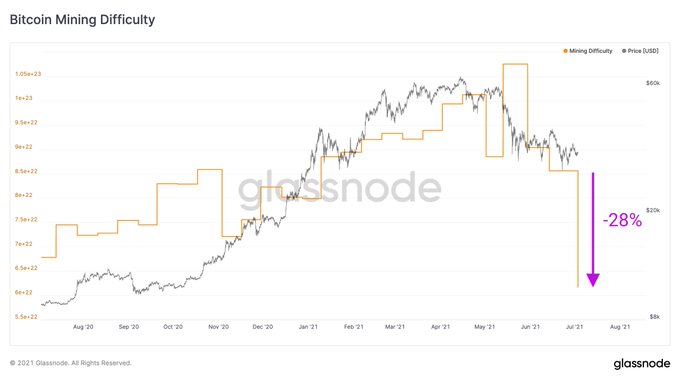The Ratio of Bitcoin’s Supply on Exchanges Hit a 6-Month Low
Bitcoin (BTC) was down by 2.87% in the last 24 hours to hit $34,380 during intraday trading, according to CoinMarketCap.

Nevertheless, statistics by Santiment show that Bitcoin’s ratio of supply on crypto exchanges hit a six-month low. The on-chain metrics provider explained:
“The ratio of Bitcoin's supply on exchanges has encouragingly slid down to its lowest since early January. The 6-month low is a promising sign, as it generally will indicate that there is a decreased risk of more major BTC selloffs.”
Santiment also pointed out a strikingly low exchange inflow and outflow activity over the weekend, and this trend has been non-existent all year.
Bitcoin mining difficulty records largest downward adjustment
According to crypto analytic firm Glassnode:
“Bitcoin mining difficulty just saw its largest downward adjustment in history: -28%.”
It, therefore, indicates less mining leading to depleted supply.
Some crypto experts had predicted that BTC mining might become more accessible and more lucrative based on China’s crackdown.
They noted that as more hashrate fell off the Bitcoin network, the difficulty would adjust downwards. Therefore, the hashrate that would remain active on the network would receive more for their proportional share of the mining rewards.
Notably, as more miners exit the Bitcoin network, fewer computational guesses per second are needed to find the mathematical solution. As a result, the hash power will reduce, and Bitcoin's network difficulty will go down.
The hashrate is used to measure the processing power of the BTC network. It allows computers to process and solve problems that would enable transactions to be approved and confirmed across the network.
Over 90% of BTC’s mining capacity was reportedly lost in China due to the Chinese authority intensified clampdown actions.
Image source: Shutterstock











